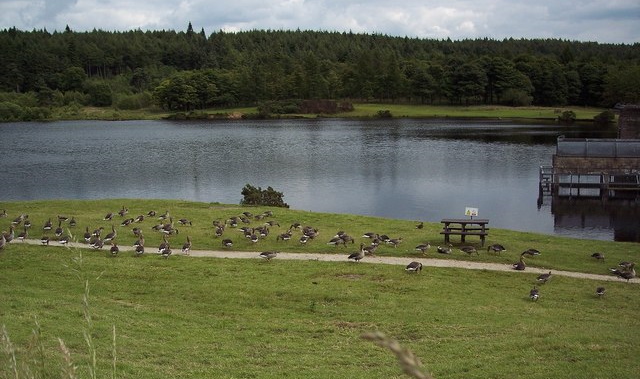
North York Moors national park bosses are to examine removing obstacles such as stiles at some of its most popular sites to enable more people to visit.
Rights of way at North York Moors beauty spots such as the 400ft deep Hole of Horcum, the 6,000-year-old woodlands of the Forge Valley and tranquil Cod Beck Reservoir are to be reviewed amid concerns that a growing number of people are being excluded from enjoying the areas.
Park visitors who struggle to access ordinary footpaths, many of which feature obstacles such as stiles, include those with hip or knee injuries, dementia, visual impairments, parents with pushchairs and even people with large or older dogs.
Recent visitors to Cod Beck Reservoir, near Osmotherley, have stated on social media that despite work to improve the footpath, the kissing gates were tight for some wheelchairs or scooters and some of the inclines would prove to be an issue for either pushchair or wheelchair users.
Ahead of the national park authority approving a Miles Without Stiles action plan earlier this year, the 554sq mile area featured 1,000 miles of footpaths, but just a handful of promoted short, fairly level routes, suitable for wheelchairs and robust pushchairs.
Each of the routes has a detailed route description after consultation with disabled people highlighted that knowing what to expect was of high importance when selecting a place to visit.
While maintaining such routes is expensive due to high surfacing standards, the authority has agreed to invest into the Miles without Stiles system, which provides a selection of routes without steps, stiles and steep gradients.
A full meeting of the park authority next week will hear after budgets were cut in response to the pandemic, planned work to upgrade routes, such as those as at Esk Valley and on the Rosedale Mineral Railway, had been postponed until next year.
Despite the restrictions, work to improve access this summer has included a 330m pump track and a 2.5km figure-of-eight cycle trail, which is enabling families to ride side-by-side through the forest, as well as providing better access for disabled cyclists using adaptive cycles.
While concerns among conservationists remain about putting hard landscaping in sensitive locations like the Hole of Horcum, an officer’s report states the walk from Saltergate car park to the natural hollow has “potential to be an outstanding accessible walk for users of all abilities”.
It states: “The terrain of the upper path is flat, offers spectacular views, which are otherwise only available from the car park.”
However, the report warns creating a path would be difficult due to outstanding issues surrounding road safety and designated ancient monuments and sustained commitment will be needed from organisations ranging from Yorkshire Water to the National Trust to create easy access routes elsewhere.
Malcolm Bowes, the authority’s deputy chairman, said following the easing of lockdown restrictions the national park had drawn many first-time visitors and the rights of way action would help cement that progress.
He said: “We are committed to improving access for who people who have some difficulty on the ordinary footpaths, to make the national park accessible to everyone.”


Be the first to comment